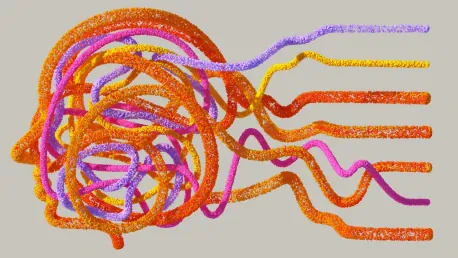Researchers at the Institute of Psychiatry, Psychology & Neuroscience (IoPPN) at King’s College London have made a groundbreaking discovery that challenges the traditional understanding of the immune system’s operation. Their study, published in the journal Brain, reveals crucial communication hubs between the brain and body, specifically in the dural sinuses and skull marrow at the back of the head. This finding suggests a significant interaction between the central and peripheral immune systems, which were previously thought to function independently.
The Discovery of Communication Hubs
The Role of Dural Sinuses and Skull Marrow
Using advanced neuroimaging techniques, the research team identified the dural sinuses and skull marrow as potential interfaces between the central and peripheral immune systems. The dural sinuses, responsible for draining deoxygenated blood from the brain, and the skull bone marrow, previously overlooked in research, appear to serve as communication hubs. This discovery challenges the long-held belief that the central immune system, which protects the brain, and the peripheral immune system, which defends the body, operate independently due to the blood-brain barrier. By revealing the anatomical structures that potentially facilitate interaction, this study paves the way for understanding how the brain can influence and be influenced by the body’s immune responses.
Using neuroimaging, the researchers mapped out areas of inflammatory activity in these newly identified communication hubs. The dural sinuses’ role in draining the brain’s deoxygenated blood situates them as a focal point for investigating how immune cells might traverse these areas into the brain. Moreover, the skull marrow and its links to peripheral immune responses present newfound pathways to consider when examining holistic immune function. These insights dismantle previous misconceptions that distinct barriers like the blood-brain barrier create absolute isolation between central and peripheral immune functions. Instead, it suggests there might be more fluid and interactive communication at these anatomical intersections than previously understood.
Implications for Immune System Interaction
The study’s findings suggest that there is a significant interaction between the brain and body in terms of immune response. By analyzing data from 51 adults with depression and 25 healthy control participants, researchers found that inflammatory activity in the dural sinuses and skull marrow correlates strongly with inflammation in both the brain and body. This correlation was more pronounced in the dural sinuses, indicating a potential interactive mechanism between the central and peripheral immune systems.
This revelation carries profound implications for how we perceive and treat inflammatory diseases and conditions. If interactions between the brain and peripheral immune systems can indeed influence one another, it offers a potential explanation for instances where systemic inflammation impacts neurological health and vice versa. Importantly, it can help drive more effective interventions and therapies that target these interfacing communication hubs. Therapies that address inflammation in these key areas could mitigate the adverse neurological symptoms commonly observed in systemic inflammatory diseases. This paradigm shift underscores the need for more research into these anatomical sites to explore how they mediate immune responses and influence overall health.
The Study’s Methodology and Findings
Data Collection and Analysis
The researchers utilized data from the BIODEP study, which examines inflammatory processes in depression. Blood samples and neuroimaging scans were collected from participants to assess inflammatory activity. The analysis revealed a strong correlation between inflammation in the dural sinuses and skull marrow with inflammation in both the brain and body, in both depressed individuals and healthy controls. By bringing together these data points, the research underscores the importance of these newly identified communication hubs in understanding the brain-body immune interaction.
The BIODEP study’s comprehensive nature allowed for a detailed examination of inflammatory processes, providing a robust dataset for this discovery. Participants offered both blood samples and brain scans, facilitating a multi-faceted analysis that captured the complexity of inflammation and its systemic impacts. The strong correlation found between inflammation in the dural sinuses and skull marrow and overall body inflammation emphasizes these areas’ pivotal roles. Importantly, similar patterns in both depressed and healthy control groups suggest these interactions remain consistent across different health states. This consistency underscores the potential universality of these findings, indicating their relevance beyond specific conditions.
Significance of the Skull-Brain Interface
Dr. Julia Schubert of King’s IoPPN emphasized the significance of the skull-brain interface as a potential intermediary that has been overlooked until now. The study identifies the skull as a crucial area that may link signals from the brain and body, providing new insights into the interaction between the central and peripheral immune systems. This discovery opens up new avenues for research and potential treatments for conditions related to immune response and inflammation.
The skull-brain interface’s newfound significance could reshape how neuroscientists and immunologists approach systemic diseases. Recognizing the skull marrow as a previously underrated site of immune activity suggests many treatments might need reevaluation or modification to target these areas more effectively. Dr. Schubert’s insights encourage the scientific community to reconsider past research that neglected this interface and to leverage new understanding to optimize therapeutic strategies. By developing a deeper comprehension of the mechanisms mediating this interaction, researchers can explore potential pathways that could be targeted to alleviate conditions involving abnormal immune responses, not just within the brain, but extending to holistic health.
Future Research and Potential Treatments
Exploring Inflammation in Other Conditions
Looking ahead, researchers aim to explore the connection between the brain and body immune systems in other conditions involving inflammation. By gaining a better understanding of the brain-body immune interaction, scientists hope to develop more holistic treatments for various disorders, including depression. This research could lead to new therapeutic approaches that address the underlying mechanisms of inflammation and immune response in the brain and body.
Such future research initiatives promise to extend the boundaries of what we know by applying insights gained from this study to a broader range of conditions. Inflammatory conditions affect a significant portion of the population, from autoimmune diseases to chronic inflammatory states, implying that targeted treatments informed by these new findings could have wide-reaching benefits. Researchers aim to identify whether inflammatory markers in the identified communication hubs can predict or indicate severity and progression in various diseases. By mapping these correlations, scientists can better understand the full spectrum of brain-body immune response interactions and craft interventions that address the root causes instead of merely managing symptoms.
Targeting Inflammation for Better Treatments
Co-author Valeria Mondelli noted the potential for these findings to help target treatments more effectively. By focusing on inflammation levels in the dural sinuses and skull marrow, doctors might better understand brain inflammation and tailor treatments for conditions like depression. This approach could provide a focused target for future therapies combating brain inflammation linked to immune-related conditions, offering more accurate and effective treatment options for patients.
The implications of tailoring treatments based on these findings are vast. By honing in on specific anatomical targets within the brain and skull, therapies could be developed to mitigate inflammation more precisely without the broader, often detrimental, effects of systemic anti-inflammatories. For example, treatments could be designed to inhibit particular inflammatory pathways active in the dural sinuses or skull marrow, reducing neurological inflammation while preserving the body’s essential immune functions. This precision medicine approach could transform treatment paradigms for conditions like depression, potentially leading to more effective treatments with fewer side effects. Additionally, nuanced treatment strategies could emerge for conditions like Alzheimer’s disease or multiple sclerosis, where inflammation plays a significant role in disease progression.
Broader Implications for Mental Health
Understanding Peripheral Immunity’s Impact on Brain Function
Brandi Eiff, the study’s first author, highlighted the importance of understanding how peripheral immunity impacts brain function and mental health. This research underscores the need for a more comprehensive approach to treating mental health disorders, considering the interaction between the brain and body immune systems. By addressing the role of peripheral immunity in brain function, scientists can develop more effective treatments for mental health conditions.
Peripheral immunity’s impact on brain function sheds new light on the intricate connections between mental health and overall physical health. Recognizing how systemic immune responses influence neurological processes could explain why patients with chronic inflammatory conditions often suffer from mental health issues. This bidirectional relationship signals the necessity for integrated medical approaches that jointly address mental and physical aspects of health. Understanding these connections better can lead to targeted interventions that reduce inflammation, potentially alleviating some of the mental health burdens associated with physical illnesses. Importantly, this research encourages a shift away from compartmentalized healthcare systems towards more collaborative and integrated practices.
Holistic Approaches to Mental Health Treatment
The study’s findings suggest that a holistic approach to mental health treatment, which considers the interaction between the brain and body immune systems, could lead to better outcomes for patients. By targeting inflammation and immune response in both the brain and body, doctors can develop more comprehensive treatment plans that address the underlying causes of mental health disorders. This approach has the potential to improve the quality of life for individuals suffering from conditions like depression and other immune-related mental health issues.
Holistic treatment approaches could revolutionize mental health care by offering more nuanced and effective strategies. For instance, interventions that combine psychological therapy with immunomodulatory treatments could provide synergistic benefits, addressing both mental health symptoms and the inflammation contributing to them. This comprehensive care model emphasizes the importance of personalized treatment plans that consider individual differences in immune responses and the specific mental health needs of each patient. By integrating insights from immunology into mental health care, doctors could not only treat but potentially prevent the onset of certain disorders, thereby improving long-term outcomes and overall well-being.
Conclusion
Researchers at the Institute of Psychiatry, Psychology & Neuroscience (IoPPN) at King’s College London have made a groundbreaking discovery that challenges the traditional understanding of how the immune system operates. Their study, which was published in the journal Brain, highlights crucial communication hubs between the brain and body. These hubs specifically exist in the dural sinuses and skull marrow at the back of the head. This important finding indicates there is significant interaction between the central and peripheral immune systems, which were previously believed to function independently. This revelation has broad implications for our comprehension of neurological and immune-related conditions, suggesting that the immune system is far more interconnected than previously understood. Future research can now explore how these findings might influence treatments for various diseases, potentially opening new avenues for therapies that address both the brain and the body’s immune responses. Understanding these communication pathways could lead to significant advancements in medical science and patient care.









